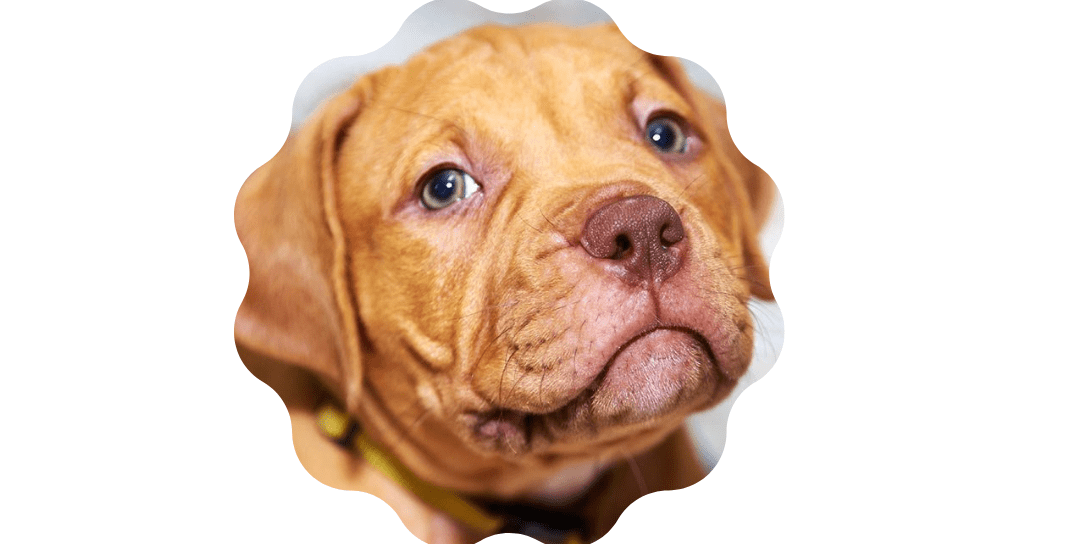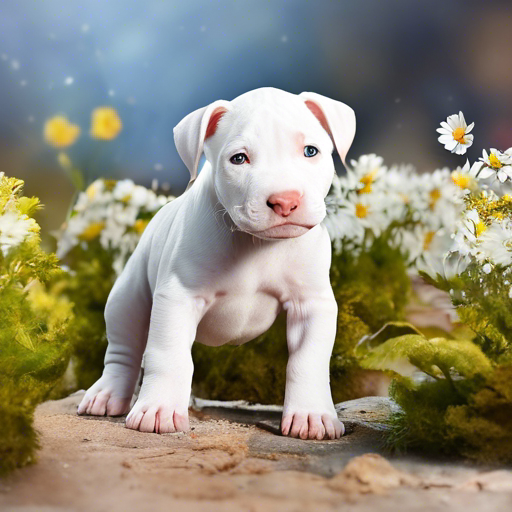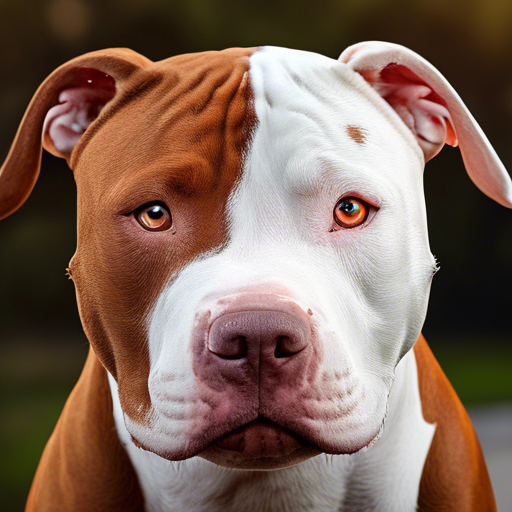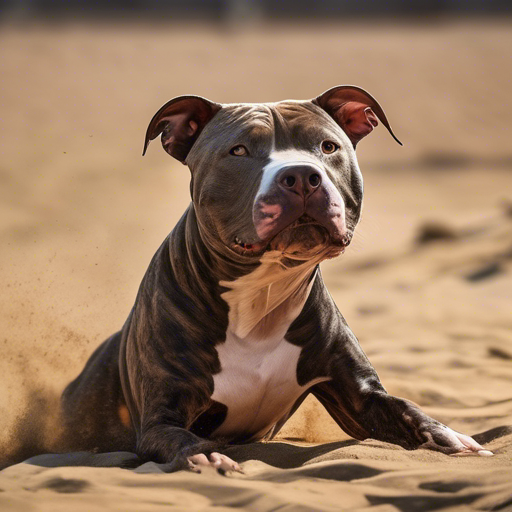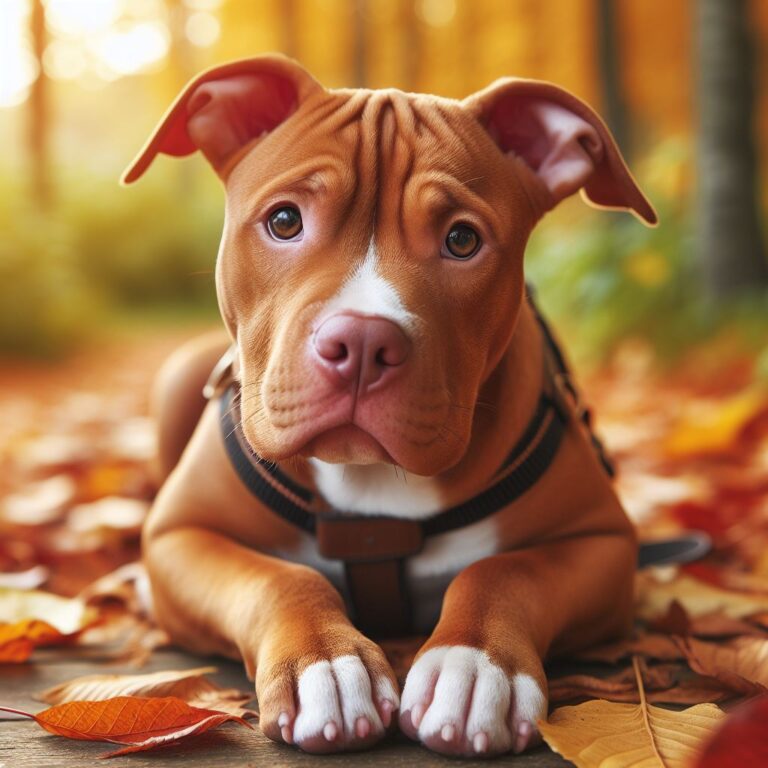Every Think You Need To Know About Red Nose Pitbull Dog
“Red Nose Pitbull” is not a distinct breed but rather a variation within the broader category of pit bull-type dogs. These dogs share characteristics typical of the pit bull type, including muscular build and often short coats, with the specific distinction of having a red-colored nose. So, the term “red nose pitbull” refers to a type or variation within the pit bull breed rather than a separate breed itself.
the term “red nose pitbull” typically refers to a specific variation or coloration within the American Pit Bull Terrier breed. These dogs have a distinctive red-colored nose and often exhibit similar physical characteristics to other pit bulls, such as a muscular build and short coat. However, it’s essential to note that “red nose” refers to a color variation rather than a separate breed. American Pit Bull Terriers come in various colors and coat patterns, with the red nose being one of them.
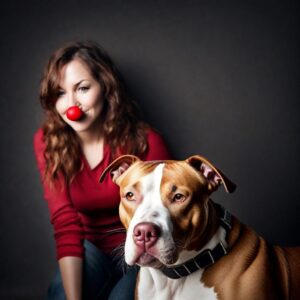
Red Nose Pitbull Dog Breed History:-
The term “pit bull” itself emerged in the 19th century, and the specific variation of the red nose pitbull likely came into prominence much later. Without concrete historical evidence, it’s difficult to determine precisely when the red nose variation within pit bulls became established, but it’s reasonable to assume it’s a relatively recent development in the history of dog breeding.
Red nose pitbulls are born through the same natural processes as other dogs. They are not a separate breed but rather a variation within the broader category of pit bull-type dogs. To produce red nose pitbull puppies, breeders may selectively mate dogs with desired traits, including the characteristic red-colored nose.
Here’s a general overview of how red nose pitbull, like any other dog, are born:-
Selective Breeding:
Breeders select parent dogs with desirable traits, including the red nose coloring, to produce offspring with similar characteristics.
Mating:
The selected parent dogs are mated to produce a litter of puppies. This can occur naturally or through artificial insemination, depending on the circumstances.
Gestation:
The female dog, known as the dam, undergoes a pregnancy period lasting around 63 days on average. During this time, the embryos develop into puppies inside the dam’s womb.
Birth:
When the dam goes into labor, she gives birth to the puppies. The birth process typically involves the expulsion of the puppies from the dam’s uterus through contractions.
Early Care:
After birth, the breeder or owner provides necessary care to the newborn puppies, including warmth, nutrition (usually through nursing from the mother or bottle-feeding), and monitoring their health.
Socialization and Training:
As the puppies grow, they require socialization and basic training to become well-adjusted adult dogs.
It’s important to note that responsible breeding practices prioritize the health and welfare of both the parent dogs and the puppies. Breeders should adhere to ethical standards and breed for temperament, health, and conformation in addition to desired physical traits like the red nose coloring. Additionally, prospective dog owners should always consider adoption from shelters and rescues as an alternative to purchasing from breeders.
How to grow Red Nose pitbull dog:-
To ensure that a Red Nose Pitbull grows up healthy and happy, it’s important to provide proper care and attention throughout its life stages. Here are some key aspects to consider:
Nutrition:
Feed your Red Nose Pitbull a balanced diet appropriate for its age, size, and activity level. Choose high-quality dog food that provides essential nutrients. Monitor portion sizes to prevent overfeeding or obesity.
Exercise:
Red Nose Pitbulls are active and energetic dogs that require regular exercise to stay physically and mentally stimulated. Provide daily walks, playtime, and opportunities for interactive games to keep them engaged and prevent boredom.
Training:
Start training and socialization early to instill good behavior and manners in your Red Nose Pitbull. Use positive reinforcement techniques such as treats, praise, and consistency to teach obedience commands and discourage unwanted behaviors.
Healthcare:
Schedule regular veterinary check-ups to monitor your dog’s health and address any medical concerns promptly. Keep up-to-date with vaccinations, parasite prevention, and dental care. Spaying or neutering is also recommended unless you plan to responsibly breed your dog.
Grooming:
Brush your Red Nose Pitbull’s coat regularly to remove loose fur and prevent matting. Bathe them as needed using a gentle dog shampoo. Trim their nails, clean their ears, and brush their teeth regularly to maintain overall hygiene.
Safety:
Provide a safe and secure environment for your Red Nose Pitbull, both indoors and outdoors. Supervise them around unfamiliar animals and people, and ensure they have proper identification, such as a collar with tags or a microchip.
Love and Attention:
Finally, give your Red Nose Pitbull plenty of love, attention, and companionship. These dogs thrive on human interaction and bond closely with their owners, so spend quality time with them, include them in family activities, and show them affection regularly.
By providing proper care, training, and socialization, your Red Nose Pitbull can grow into a well-behaved, healthy, and happy companion.
Red nose pitbull dog Breed nutrition:
To ensure optimal health and well-being for your Red Nose Pitbull, it’s crucial to provide a well-balanced diet tailored to its specific needs. Here are some guidelines for proper nutrition:
Age-Appropriate Diet:
Select a dog food formulated for your Red Nose Pitbull’s life stage (puppy, adult, senior) to meet its nutritional requirements.
Size and Activity Level:
Consider your dog’s size and activity level when determining portion sizes and calorie intake. Active dogs may require more calories, while less active or senior dogs may need fewer calories to maintain a healthy weight.
High-Quality Dog Food:
Choose a high-quality commercial dog food that contains real meat as the primary ingredient and is free from artificial additives, fillers, and by-products. Look for brands that meet the standards set by reputable organizations like the Association of American Feed Control Officials (AAFCO).
Protein and Fat Content:
Ensure that the dog food provides adequate levels of protein and healthy fats to support muscle maintenance, energy levels, and overall health. Animal-based proteins are especially beneficial for dogs.
Carbohydrates and Fiber:
While dogs primarily require protein and fat, carbohydrates and fiber can also be included in their diet in moderate amounts to provide energy and promote digestive health. Whole grains, fruits, and vegetables are good sources of carbohydrates and fiber.
Moderation and Monitoring:
Avoid overfeeding your Red Nose Pitbull, as excess calories can lead to weight gain and obesity, which can increase the risk of health problems. Use feeding guidelines provided by the dog food manufacturer as a starting point, but adjust portion sizes based on your dog’s individual needs and body condition.
Hydration:
Always ensure that your dog has access to fresh, clean water at all times to prevent dehydration and support proper bodily functions.
Consultation with a Veterinarian:
If you’re unsure about the best diet for your Red Nose Pitbull or if your dog has specific dietary needs or health concerns, consult with a veterinarian for personalized recommendations and guidance.
By providing a balanced and nutritious diet, you can help your Red Nose Pitbull maintain optimal health, energy levels, and overall well-being throughout its life.
How important is exercise for a Red Nose Pitbull dog?
